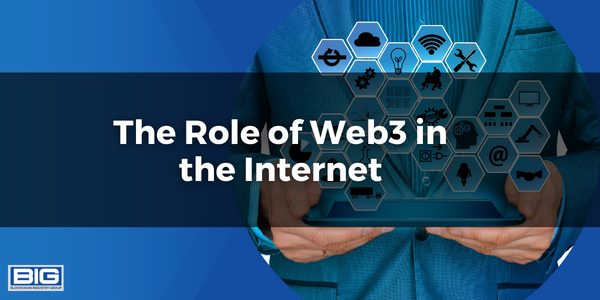
The internet has undergone tremendous changes in the past few decades, and the advent of Web3 is set to revolutionize it once again. Web3 represents a new generation of decentralized technologies that offer greater privacy, security, and control over our online experiences. However, to fully understand the role that Web3 will play in shaping the future of the internet, it is important to first examine the limitations of its predecessor, Web2.
Limitations of Web2
Web2, also known as the “read-write” web, refers to the internet as we know it today. This web is characterized by centralized platforms, such as Facebook, Google, and Amazon, that control the flow of information and data online. These centralized platforms have several drawbacks, including a lack of privacy, security breaches, and unequal distribution of power.
For example, the Cambridge Analytica scandal in 2018 exposed the extent to which user data can be misused by third parties, with millions of Facebook users’ personal information being collected and analyzed for political gain. This serves as a stark reminder of the dangers posed by centralized platforms and the need for alternative solutions.
Advantages of Web3
Web3, on the other hand, is built on a decentralized network, which means that there is no single entity that controls the flow of information and data. This offers several key advantages, including:
- Increased privacy: With Web3, user data is stored on a decentralized network, making it much harder for third parties to access and misuse it. This offers a higher level of privacy and security compared to Web2.
- Enhanced security: Decentralized networks are more resistant to security breaches and cyberattacks, as there is no single point of failure. This makes Web3 a safer and more secure option for online transactions and interactions.
- Empowerment of users: In a decentralized network, users are in control of their own data and information. This gives individuals greater control over their online experiences, as well as the ability to make decisions about how their data is used and shared.
- Decentralized apps (dApps): Web3 enables the development of decentralized applications (dApps), which are powered by blockchain technology. These dApps offer a range of benefits, including increased transparency, accountability, and the ability to run applications without intermediaries.
The Future of the Internet with Web3
The potential of Web3 is vast, and its impact on the future of the internet is sure to be significant. Web3 has the potential to disrupt traditional business models and create new opportunities in areas such as e-commerce, social media, and content creation.
For example, Web3 offers the potential for a new generation of e-commerce platforms that are not controlled by a single entity, but instead operate on a decentralized network. This would give consumers greater control over their online shopping experiences and reduce the risk of data breaches and fraud.
Finance and the Promise of Future Technology
—
Healthcare and the Promise of Future Technology
—
Hospitality and the Promise of Future Technologies
Similarly, Web3 has the potential to reshape the social media landscape, with decentralized networks offering a more secure and private alternative to existing platforms. This could help to restore trust in online interactions and encourage the development of new, innovative social media applications.
Conclusion
In conclusion, Web3 represents a significant step forward for the internet, offering a range of benefits over its predecessor, Web2. From increased privacy and security to the empowerment of users and the development of decentralized applications, Web3 has the potential to revolutionize the way we interact with the internet and with each other.



